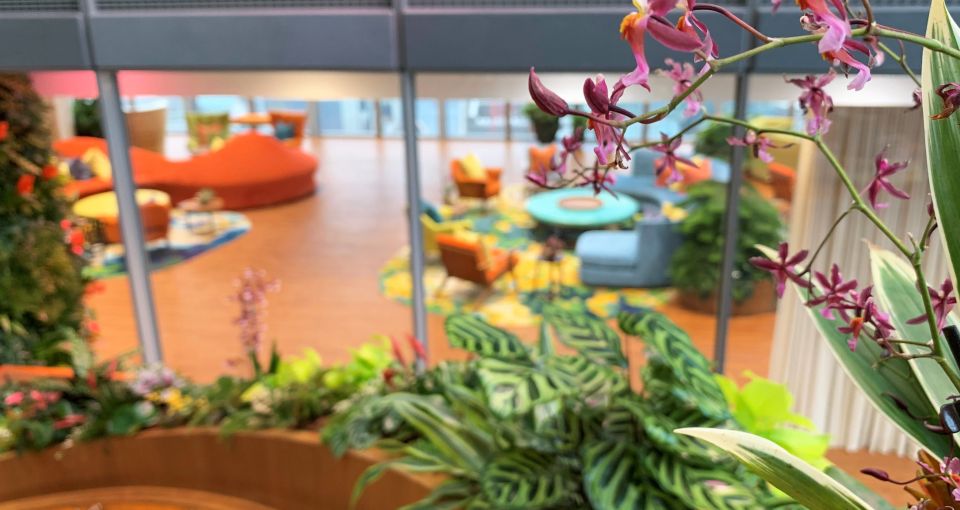- Home
- Living Walls
- Landscaping
- Our Products
- Our Services
- Case Studies
- About Us
- Learn
Imagining a Sustainable Future: How to Build Back Greener and Smarter
According to a recent UN report, construction is responsible for 38% of all energy-related CO2 emissions[1] - a record high for the industry. The last year has been the wake-up call. Developers are being encouraged to focus on sustainable development which is crucial if we intend to combat global warming and propel ourselves toward long-term green growth.
Many businesses have begun to consider urban greening, amongst other innovations, as part of sustainable development. Nature-based solutions and thoughtful development in urban environments could be the key to building back greener and smarter in this new world.
In this article, we’ve explored ways the Construction Industry can support the development of green cities in the wake of the pandemic.
Integrating urban greening
As we seek to balance an ever-growing demand for infrastructure with a need to protect our environment and the world we live in, urban greening can play a vital role. Urban greening solutions offer more than making buildings more visually appealing, they improve air quality, encourage urban biodiversity, and reduce the risk of flooding in densely populated areas.
Creating green spaces from gardens and local parks to woodlands make urban places more sustainable and healthier for our growing population to live and work, particularly as the pandemic has triggered a renewed appreciation of the great outdoors. Greenery and biodiversity have been directly linked to improved health and wellbeing among urban populations[2].
Initiatives such as micro forests present an innovative and effective solution for carbon mitigation in urban areas, in addition to supporting biodiversity in highly populated areas. For example, a 100m2 area of forest using native tree species can provide an initial home of over 500 species of insects after just four years. Furthermore, 1m2 of micro forest is capable of sequestering around three kilos of CO2 per annum and is able to reduce urban noise such a road traffic by up to 30 times. Even better, maintenance of micro forests is minimal and after three years, the forest is able to sustain itself.
Creating smarter buildings
To build back greener, we need to utilise every opportunity available. According to research, traditional buildings account for nearly 30% of global CO2 emissions through burning fossil fuels for heating and electricity consumption[3]. Designing smarter buildings goes a long way to reducing carbon emissions and improving quality of life for citizens.
Green facades, such as living walls, can help buildings become more energy-efficient. Living walls contribute to temperature regulation - keeping things cool in the summer and warm in the winter - which can greatly improve thermal energy performance. They also have the benefit of reducing noise levels in urban environments by reflecting, refracting and absorbing acoustic energy through natural insulation, which can be particularly useful in communal buildings and those located near areas that experience high volumes of traffic.
Likewise, LivingPillars® can make use of street furniture such as lamp posts to help green public spaces. The LivingPillars® are an innovative way of introducing more planting in dense urban areas where tree planting is not viable due to existing underground services, and can help counteract trapped heat in cities to reduce temperatures, provide more oxygen and trap particulates. Most importantly, LivingPillars® are able to provide biodiversity ‘corridors’ from the countryside right into the centre of our cities, as well as providing a link between existing parks and green spaces.
Encouraging sustainable building practices
One of the best ways to build back greener and smarter is to implement more sustainable construction practices. Being more environmentally conscious in the materials we choose can have a positive impact on the environment and reduce wastage in the industry. Opting for natural materials such as wood, recycled stone, and locally sourced materials can greatly reduce carbon footprint and enable greener practices.
Businesses should also consider new green building standards, announced as part of the UK’s commitment to zero carbon by 2025[4]. Exploring natural solutions to temperature regulation, as outlined above, and pursuing renewable energy sources can help make cities greener in the long run.
Overall, there are many ways developers and urban planners can build back greener and smarter as we enter this period of change and renewal. If you’re interested in exploring further, get in touch at This email address is being protected from spambots. You need JavaScript enabled to view it..
Sources:
[1] https://www.unep.org/news-and-stories/press-release/building-sector-emissions-hit-record-high-low-carbon-pandemic
[2] https://www.frontiersin.org/articles/10.3389/frsc.2020.00018/full
[3] https://www.iea.org/data-and-statistics/data-products
[4] https://www.gov.uk/government/news/rigorous-new-targets-for-green-building-revolution
Offices
Ditton Nurseries
Summerfield Lane
London, KT6 5DZ
Useful Links
© Copyright
Scotscape.
All rights reserverd.


